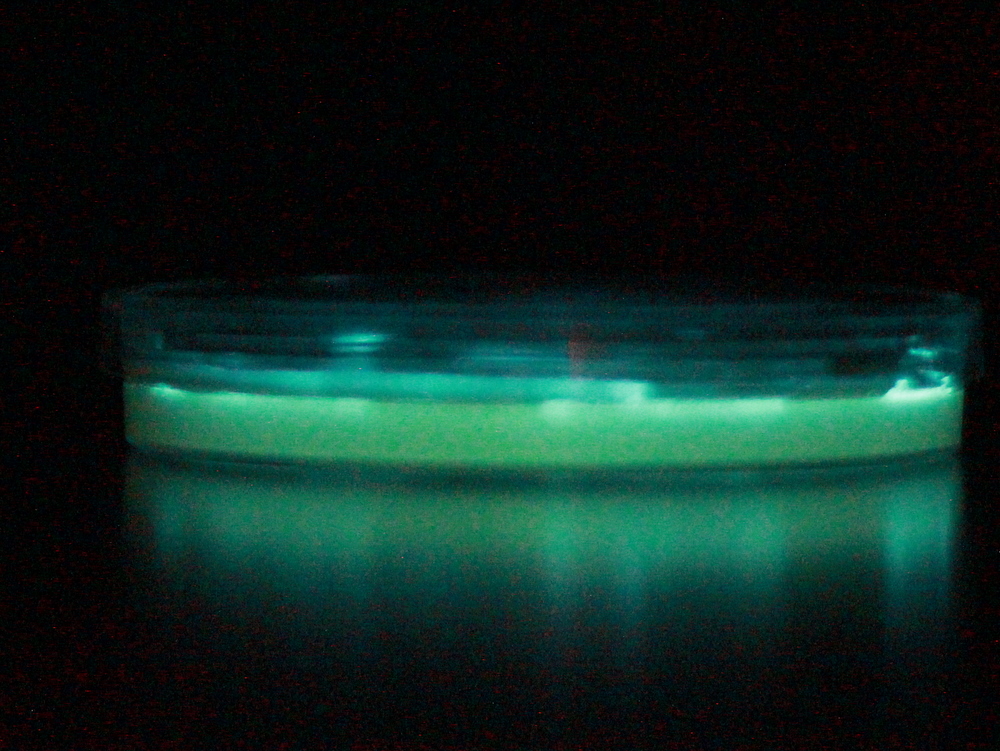Team:Cambridge/Safety
From 2010.igem.org
| Line 2: | Line 2: | ||
{{:Team:Cambridge/Templates/headerbar|colour=#fb5c2b|title=Safety: Under construction}} | {{:Team:Cambridge/Templates/headerbar|colour=#fb5c2b|title=Safety: Under construction}} | ||
{{:Team:Cambridge/Templates/RightImage|image=Cambridge-Photobacterium_plate.JPG|caption=One of the plates of <i>V. phosphoreum</i> we prepared.}} | {{:Team:Cambridge/Templates/RightImage|image=Cambridge-Photobacterium_plate.JPG|caption=One of the plates of <i>V. phosphoreum</i> we prepared.}} | ||
| - | + | ==Researcher safety== | |
| - | + | ||
| - | + | ||
As with any scientific project, ours will require safety precautions to ensure the safety of researchers. These include the use of gloves and labcoats to protect from chemicals which are irritant (including luciferin) and the use of masks when using powdered media. Materials safety datasheets and COSSH forms will be used to assess risk. | As with any scientific project, ours will require safety precautions to ensure the safety of researchers. These include the use of gloves and labcoats to protect from chemicals which are irritant (including luciferin) and the use of masks when using powdered media. Materials safety datasheets and COSSH forms will be used to assess risk. | ||
| - | + | ==Public safety== | |
| - | + | ||
| - | + | ||
| - | + | There is very little risk to public safety from our project. We are using non-pathogenic lab strains of E. coli which have lost their ability to compete in the intestine. The recombinant DNA we are creating emits light, it is difficult to see how this could ever engender pathogenicity even after horizontal transfer to other organisms. Nevertheless our project must be properly contained. Control measures to ensure this include keeping the windows of the laboratory closed and autoclaving all waste. | |
| - | + | ==Environmental safety== | |
| - | + | We are using lab strains of E. coli which do not thrive outside the lab, we are not conferring any additional fitness advantages on our bacteria apart from antibiotic resistance which is a common feature of lab work. Our project does not pose a risk to environmental safety. But containment remains essential | |
| + | ==Do our BioBricks raise safety issues?== | ||
No. | No. | ||
How could other teams learn from your experience? | How could other teams learn from your experience? | ||
| - | + | ==Biosafety at Cambridge== | |
Yes | Yes | ||
If yes, what does your local biosafety group think about your project? | If yes, what does your local biosafety group think about your project? | ||
Revision as of 12:19, 21 October 2010

Researcher safety
As with any scientific project, ours will require safety precautions to ensure the safety of researchers. These include the use of gloves and labcoats to protect from chemicals which are irritant (including luciferin) and the use of masks when using powdered media. Materials safety datasheets and COSSH forms will be used to assess risk.
Public safety
There is very little risk to public safety from our project. We are using non-pathogenic lab strains of E. coli which have lost their ability to compete in the intestine. The recombinant DNA we are creating emits light, it is difficult to see how this could ever engender pathogenicity even after horizontal transfer to other organisms. Nevertheless our project must be properly contained. Control measures to ensure this include keeping the windows of the laboratory closed and autoclaving all waste.
Environmental safety
We are using lab strains of E. coli which do not thrive outside the lab, we are not conferring any additional fitness advantages on our bacteria apart from antibiotic resistance which is a common feature of lab work. Our project does not pose a risk to environmental safety. But containment remains essential
Do our BioBricks raise safety issues?
No.
How could other teams learn from your experience?
Biosafety at Cambridge
Yes If yes, what does your local biosafety group think about your project? If no, which specific biosafety rules or guidelines do you have to consider in your country? Do you have any other ideas how to deal with safety issues that could be useful for future iGEM competitions? How could parts, devices and systems be made even safer through biosafety engineering?
 "
"
